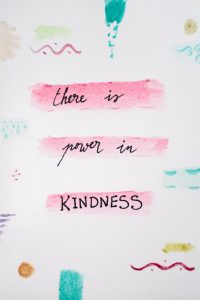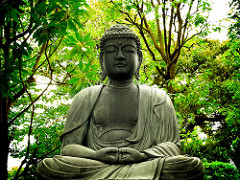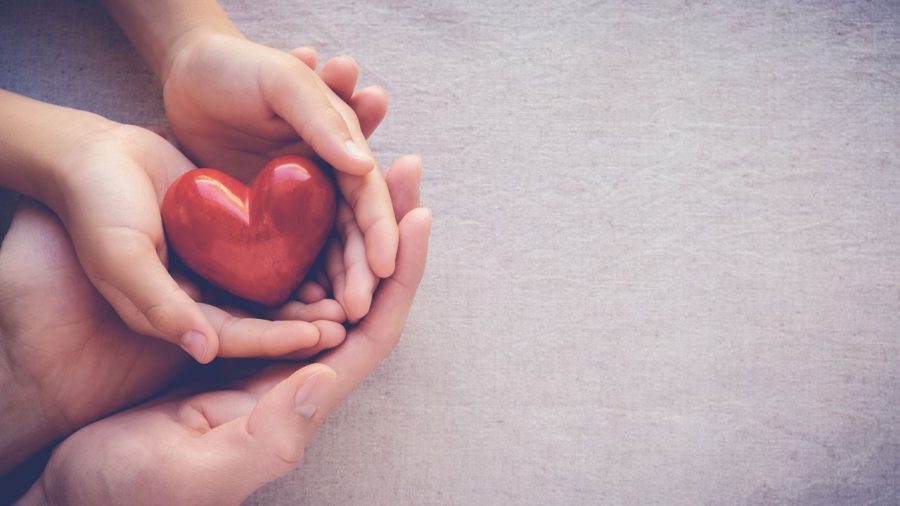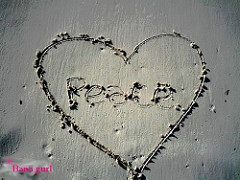Mindfulness is a conscious awareness of doing something, being in the moment with your internal states, including your thoughts, feelings, emotions, bodily sensations, and outer environment. In this post, I wanted to discuss how this technique can be applied to motivate activities that can help improve your confidence.
Mindfulness is ubiquitous in mental health and wellness. Over the past twenty years, I have noticed that this concept recently on the rise is welcoming. Many mind-identified individuals embrace it. But, it can be so much more if we find a creative way to use this principle.
“Mindfulness versus Mindlessness – which would you rather be?”
Mindfulness concerns the mental activity and mental state with thoughtfulness rather than mindlessness. It is an internal and external observation of one’s state without judgment, attention or focus. It is about noticing whatever it is in the moment and letting it go.
 The purpose of mindfulness is to stay neutral to your experiences with the intention of staying with yourself. The idea is to be alert with a focused relaxation. Thoughts and abreactions in the body will arise. You may notice them and observe them without judgement. They will find that they will soon dissipate and disappear.
The purpose of mindfulness is to stay neutral to your experiences with the intention of staying with yourself. The idea is to be alert with a focused relaxation. Thoughts and abreactions in the body will arise. You may notice them and observe them without judgement. They will find that they will soon dissipate and disappear.
Mindfulness helps to improve the processing in the psyche. It helps balance any chemical imbalances in the brain and realign cognitive distortion. It helps bring awareness to thoughts and thinking patterns. It makes conscious your proclivity to analyse, criticise or ruminate in the mind. When you are wide awake to the way you think, and what you tend to think about, you will have the capacity to notice your thinking tendencies, which will, in turn, improve self-awareness and self-consciousness in the realisation. The realisation comes with a sense of achievement and wonders, followed by positive mental and physical feelings.
 In the state of mindfulness, your mental and physical state changes any chemical imbalances in the brain. It makes it rewarding and satisfying. This helps you see your inner resilience and inner strength as you successfully become mindful. You could instantly feel an improvement in your entire being. Eventually, you can feel confident in your achievement of being mindful. Before you know it, you are already motivated to keep practising mindfulness.
In the state of mindfulness, your mental and physical state changes any chemical imbalances in the brain. It makes it rewarding and satisfying. This helps you see your inner resilience and inner strength as you successfully become mindful. You could instantly feel an improvement in your entire being. Eventually, you can feel confident in your achievement of being mindful. Before you know it, you are already motivated to keep practising mindfulness.
Mentally, you will soon notice an improvement in your problem-solving ability and reasoning skills. Improving the mind will help reduce psychic tension, such as anxieties, depression, conflicts and afflictions.
Physically, you will soon notice an improvement in your physiological responses to situations, such as lowering heart rate, lowering blood pressure, and improved sleep. The body will benefit from conditions such as gastrointestinal discomfort, chronic pain, illnesses and dis-ease.
Emotionally, you will soon notice a shift in your feelings and emotions. If you were previously pessimistic, a “glass half empty person”, you might notice that you are becoming optimistic, a “glass half full person” now. You might now recognise how you feel about a distressful situation and find a way to resolve it with ease. As you feel comfortable, you will begin to notice your confidence and esteem rising.
“Mindfulness versus Mindlessness? I know which one I would choose.”
There are many creative ways to incorporate mindfulness into our daily lives. You probably already know how to include mindfulness into your daily ritual. I hope you can feel the difference in this way of being when you make mindfulness a part of your life. And that this positive feeling acts as a motivation for you to keep using the technique. Mindfulness is often used with meditation, relaxation, visualisation, hypnotherapy, and more. However, there are different ways you can apply mindfulness to deepen your self-development.
 Mindful meditation requires you to sit in a meditative lotus posture, preferrable where you can be close to the ground for grounding and support. The combination of mindfulness and meditation is a marriage made in heaven. It is the most effective approach to a mindful state. You might want to explore using mantra words or statements to repeat silently during the meditation.
Mindful meditation requires you to sit in a meditative lotus posture, preferrable where you can be close to the ground for grounding and support. The combination of mindfulness and meditation is a marriage made in heaven. It is the most effective approach to a mindful state. You might want to explore using mantra words or statements to repeat silently during the meditation.
Mantra words or statements for motivation might be; you are a master of your mind and body, you are confident, you can achieve greatness, you can achieve relaxation easily. Perhaps you can think of your own mantra.
Affirmations for motivation in your meditation might include statements such as, I am confident, I am calm, I am relaxed in stressful situations, I am motivated, I am committed to self-care and self-love. Perhaps you can think of more affirmations that suit you better.
Body awareness mindfulness acknowledges the body’s physical state. You might notice the body sensation or discomfort in the meditative state, such as coughing, itching, tingling, and warmth. Whatever the sensation, observe it without judgement or critique. The purpose of this approach is to scan the body so that you can develop an awareness of your body. This is especially effective if you are disidentified or dissociated from the body.
Sensory awareness meditation acknowledges sensations such as tastes, smells, sounds and touches on the skin or body. The purpose of this approach is to observe your senses, including your sixth sense. You can become attuned to your senses through this practice. It helps to develop an awareness of your senses. Everyone has a strong preference for their sensory modality. You might be essentially a visual person. However, to be more self-aware, you need to be aware of all your senses.
 Emotional awareness meditation concerns your feelings emotions. This approach of mindfulness meditation considers being with your feelings and emotions. However, you might already know that it is difficult to practice mindfulness meditation when an emotion grips you. But, this is the best time to use this technique. In a meditative and relaxed state, you can observe your feelings, name them, locate it in the body and bear with them much easier than in the heightened state. In a heightened state, you are reactive to the experience in the situation. In a relaxed state, you are non-reactive but responsive and aware of the emotions. If helpful, you can go into the meditation and recall an event where strong emotions arise. Practice being with your feelings and emotions. Observe them without judging or giving them narratives or meanings. Accepting them as being a part of you and having compassion for the way they had influenced your responses.
Emotional awareness meditation concerns your feelings emotions. This approach of mindfulness meditation considers being with your feelings and emotions. However, you might already know that it is difficult to practice mindfulness meditation when an emotion grips you. But, this is the best time to use this technique. In a meditative and relaxed state, you can observe your feelings, name them, locate it in the body and bear with them much easier than in the heightened state. In a heightened state, you are reactive to the experience in the situation. In a relaxed state, you are non-reactive but responsive and aware of the emotions. If helpful, you can go into the meditation and recall an event where strong emotions arise. Practice being with your feelings and emotions. Observe them without judging or giving them narratives or meanings. Accepting them as being a part of you and having compassion for the way they had influenced your responses.
Behavioural awareness meditation involves being in a meditative state with the intention of observing your behaviour in situations. The aim here is to recognise your behaviours, behave, and react in a situation. You might not like a specific behaviour such as excessive alcohol, drug use, gambling, or eating. This approach works well with unwanted behaviours; such as compulsivity, impulsivity, habitual, addiction, as well as maladaptive or destructive behaviours such as self-harming acts. This mindful technique needs a lot of will or volition. A word of warning, a strong sense of self and ego strength is required to try this method.
Basic mindfulness requires you to sit someplace quiet and be physically still. The purpose of this technique is about being with yourself in your inner world. It is essential to be silent, without external sounds (music, TV, radio etc.). You might not be able to avoid the outside sounds. You might experience abreaction such as a cough, an ache, a cramp and others. Bear with it if you want to experience the positivity of a mindful effect.
Simple mindfulness can be applied to other aspects of your life, such as walking or light exercises like yoga. I use mindfulness regularly for all sorts of reasons. I use mindfulness when I am drawing or painting and running or swimming. I am sure you can also think of your own way to incorporate mindfulness with activities in your life—any activities except driving or anything involving risk to your health and wellness.
To summarise, mindfulness breathing is fantastic for personal development and general wellbeing. It is something that can be done effortlessly. After all, you are breathing right now as you are reading this!
If you are struggling and need support, maybe you will give me a call?


 For example, when someone asked me to do something, I had previously thought it was a form of command because my experiences with authority have been negative.
For example, when someone asked me to do something, I had previously thought it was a form of command because my experiences with authority have been negative. In order to be connected to your inner world and find your inner sacred sanctuary, you got to want to know more about yourself.
In order to be connected to your inner world and find your inner sacred sanctuary, you got to want to know more about yourself. These acts of loving-kindness to others are false and unobtainable. It implies that you are kind and loving for sure, but you act and behave kindly and lovingly to others for the reciprocal acts. You cannot make anyone love you. But, we all do and try, and mostly in vain. This is because we have not learned to be kind and love ourselves first. It can take a long time to have Self-love, but we can begin with having kindness for ourselves.
These acts of loving-kindness to others are false and unobtainable. It implies that you are kind and loving for sure, but you act and behave kindly and lovingly to others for the reciprocal acts. You cannot make anyone love you. But, we all do and try, and mostly in vain. This is because we have not learned to be kind and love ourselves first. It can take a long time to have Self-love, but we can begin with having kindness for ourselves. Learning something new about yourself should be something that you like and find interesting. If you don’t like what you’re learning about yourself, then, you are not yet ready for this wondrous journey because you will learn some things that you might not like.
Learning something new about yourself should be something that you like and find interesting. If you don’t like what you’re learning about yourself, then, you are not yet ready for this wondrous journey because you will learn some things that you might not like. However, if you want growth and development, you do need to be flexible in your approach and processes. Being flexible and adaptable is a positive approach to dealing with the daily challenges of existence.
However, if you want growth and development, you do need to be flexible in your approach and processes. Being flexible and adaptable is a positive approach to dealing with the daily challenges of existence.


 The acts of kindness benefit us all, and it makes the world a better place to live in. When we perform an act of kindness for another, we should not expect anything in return. I am referring to doing kind acts for someone without expecting reciprocal service or returning a favour. The truest act of kindness comes without any conditions. It is simply an act of kindness that benefits another person without any underlying need for payback.
The acts of kindness benefit us all, and it makes the world a better place to live in. When we perform an act of kindness for another, we should not expect anything in return. I am referring to doing kind acts for someone without expecting reciprocal service or returning a favour. The truest act of kindness comes without any conditions. It is simply an act of kindness that benefits another person without any underlying need for payback. Behaving and acting kindly come in many varieties. Behaving kindly includes giving way to someone coming the opposite way on a path, giving up your seat on trains or buses, offering someone you know a lift home. Showing helpfulness in teamwork, adapting a helpful mental attitude to a work colleague, illustrating helpful aptitude in community work are also helpful behavioural traits.
Behaving and acting kindly come in many varieties. Behaving kindly includes giving way to someone coming the opposite way on a path, giving up your seat on trains or buses, offering someone you know a lift home. Showing helpfulness in teamwork, adapting a helpful mental attitude to a work colleague, illustrating helpful aptitude in community work are also helpful behavioural traits. Helping and kindness come with rewards and self-improving moods. We can be creative in being kind without the other person knowing it. A kind act includes doing charity works or donations. In this way, we are acting kind, and we are not directly known. A kind act also includes cleaning up and clearing hazards. Picking a nail and keeping other road users safe is a kind act. Joining your local Wombles is an act of kindness in keeping your community clear and clean. Help elderly neighbours by doing their shopping, dropping off their groceries, or cooking them a meal. Help fellow mums at school and take their children to/from school, or offer to babysit. Offer your time and services in doing charity works is a kind act. Perhaps you can think of other creative ways to be kind.
Helping and kindness come with rewards and self-improving moods. We can be creative in being kind without the other person knowing it. A kind act includes doing charity works or donations. In this way, we are acting kind, and we are not directly known. A kind act also includes cleaning up and clearing hazards. Picking a nail and keeping other road users safe is a kind act. Joining your local Wombles is an act of kindness in keeping your community clear and clean. Help elderly neighbours by doing their shopping, dropping off their groceries, or cooking them a meal. Help fellow mums at school and take their children to/from school, or offer to babysit. Offer your time and services in doing charity works is a kind act. Perhaps you can think of other creative ways to be kind. Acts of kindness include sending kind messages to a significant person or someone needing love and appreciation. This person might be a work colleague, a friend or a family member. Writing them handwritten note shows that the kind words and considerations had been carefully thought about with affection. Call a friend or family and tell them that you care and have no other agenda than to say that. Spreading love is a kindness of the heart.
Acts of kindness include sending kind messages to a significant person or someone needing love and appreciation. This person might be a work colleague, a friend or a family member. Writing them handwritten note shows that the kind words and considerations had been carefully thought about with affection. Call a friend or family and tell them that you care and have no other agenda than to say that. Spreading love is a kindness of the heart.
 Acceptance is a concept of belief that recognises the validity of a thing or situation as it is. It is a conscious act with a positive intention for open-mindedness. It is to perceive something or a problem with a realistic view without judgement, assumption or supposition. In Psychology, acceptance is a catharsis, and it is a process of healing our cognition and emotion. But, if we can extend acceptance to all aspect of our lives and ourselves, we can come to a place of peace.
Acceptance is a concept of belief that recognises the validity of a thing or situation as it is. It is a conscious act with a positive intention for open-mindedness. It is to perceive something or a problem with a realistic view without judgement, assumption or supposition. In Psychology, acceptance is a catharsis, and it is a process of healing our cognition and emotion. But, if we can extend acceptance to all aspect of our lives and ourselves, we can come to a place of peace. Accepting what is is a personal challenge that I sometimes struggle with because mistakes happen in the reality of a situation, especially in a relationship. It is an ongoing process, and one should not place emphasis on achieving and then forgetting it. It is not about ticking the box, and you are done with it. But, the more you practice and adopt this way of being, the more familiar you will become with accepting things, situation, people, life and yourself.
Accepting what is is a personal challenge that I sometimes struggle with because mistakes happen in the reality of a situation, especially in a relationship. It is an ongoing process, and one should not place emphasis on achieving and then forgetting it. It is not about ticking the box, and you are done with it. But, the more you practice and adopt this way of being, the more familiar you will become with accepting things, situation, people, life and yourself. Mental health has been a challenge that has recently spiked on the global scale since the pandemic. It has long been a part of Western societies since the birth of psychiatry, and possibly longer than that. Mental disturbances are a challenge that poses psychological and physical discomfort in the individual. Mental disturbances can range from worrying about your loved ones to concern for their safety and welfare. It is any disturbances that are constructed in the mind. The longer we are exposed to these disturbances, the more problem it poses on our mental health. Thus, our mental wellness depends on the way we think and how we construct our inner world.
Mental health has been a challenge that has recently spiked on the global scale since the pandemic. It has long been a part of Western societies since the birth of psychiatry, and possibly longer than that. Mental disturbances are a challenge that poses psychological and physical discomfort in the individual. Mental disturbances can range from worrying about your loved ones to concern for their safety and welfare. It is any disturbances that are constructed in the mind. The longer we are exposed to these disturbances, the more problem it poses on our mental health. Thus, our mental wellness depends on the way we think and how we construct our inner world. Mental health awareness is the ability to develop compassion for ourselves and our mental construct as well as the mental capability of another. It is also about treating ourselves and others the way we would like to be treated. It is about watching our thoughts and thinking well of ourselves and others. Having an awareness of our thought processes give us realisation. In the realisation, we become compassionate with ourselves and how our mind works things out.
Mental health awareness is the ability to develop compassion for ourselves and our mental construct as well as the mental capability of another. It is also about treating ourselves and others the way we would like to be treated. It is about watching our thoughts and thinking well of ourselves and others. Having an awareness of our thought processes give us realisation. In the realisation, we become compassionate with ourselves and how our mind works things out. You are more than your mind. Therefore, you are more than the way you think and what you think. Thinking is just what you happen to do because the brain does not shut up. Thoughts will always intrude on the psyche. But, thought forms, and then they disappear. When you give focus, attention and meaning to the ideas, your thinking and other thought-forms arise to become problematic. It is at this point that having a
You are more than your mind. Therefore, you are more than the way you think and what you think. Thinking is just what you happen to do because the brain does not shut up. Thoughts will always intrude on the psyche. But, thought forms, and then they disappear. When you give focus, attention and meaning to the ideas, your thinking and other thought-forms arise to become problematic. It is at this point that having a 
 During the nocturnal hours, your body’s naturally crave sleep because your internal biological clock or the circadian rhythm is synchronised with the day/night cycle of the diurnal rhythm. The
During the nocturnal hours, your body’s naturally crave sleep because your internal biological clock or the circadian rhythm is synchronised with the day/night cycle of the diurnal rhythm. The  The inability to sleep or sleep well at night depends on your internal and external stressors, mental states, food that you have eaten and health condition. Many other factors also prevent us from sleeping, include anxieties, traumas and crises can interfere with our sleep habit as we lay down to rest. Unfortunately, this cacophony rings in our mind, and it can ruminate in the psyche as we sleep, becoming a nightmare that disrupts our natural healing process. If you take your woes to bed, when you close your eyes and managed to get a wink of sleep, it won’t be long before the problem invades your dreams. What you mentally think about will become your mental reality within the dream state.
The inability to sleep or sleep well at night depends on your internal and external stressors, mental states, food that you have eaten and health condition. Many other factors also prevent us from sleeping, include anxieties, traumas and crises can interfere with our sleep habit as we lay down to rest. Unfortunately, this cacophony rings in our mind, and it can ruminate in the psyche as we sleep, becoming a nightmare that disrupts our natural healing process. If you take your woes to bed, when you close your eyes and managed to get a wink of sleep, it won’t be long before the problem invades your dreams. What you mentally think about will become your mental reality within the dream state. Have a goal in mind for your bedtime (sleep time). This is a time that you want to be in bed, lights out, eyes shut and breathing easily.
Have a goal in mind for your bedtime (sleep time). This is a time that you want to be in bed, lights out, eyes shut and breathing easily. I firmly believe that rituals are helpful. Have a bedtime routine and pattern that you stick to help you build a structure around your sleeping habit. I cannot stress the importance of sticking to your routines and think positively about enjoying the mundane.
I firmly believe that rituals are helpful. Have a bedtime routine and pattern that you stick to help you build a structure around your sleeping habit. I cannot stress the importance of sticking to your routines and think positively about enjoying the mundane. I give myself around 10-15 minutes for relaxation. In that time, I may mediate or listen to soothing, relaxing music to ease myself to sleep. You might find my
I give myself around 10-15 minutes for relaxation. In that time, I may mediate or listen to soothing, relaxing music to ease myself to sleep. You might find my  By 23.00, lights out for me, regardless of whether my husband or I am ready. I turned off the light.
By 23.00, lights out for me, regardless of whether my husband or I am ready. I turned off the light.
 As a psycho-spiritual therapist, I believe that the physical body has two ‘minds’; the cognitive-mind and the heart-mind. Therein, the brain is the cognitive-mind, and the heart is the heart-mind. It might help if you think of the brain as the all-knowing ‘supercomputer’. Memories, experiences, and programmings are stored. Thus, the heart is the ‘operator’, the user, the decision-maker. Imagine making your decisions from the heart. Henceforth, I want to discuss the concept of heart-mind further because I believe that this is the primary and the brain is secondary.
As a psycho-spiritual therapist, I believe that the physical body has two ‘minds’; the cognitive-mind and the heart-mind. Therein, the brain is the cognitive-mind, and the heart is the heart-mind. It might help if you think of the brain as the all-knowing ‘supercomputer’. Memories, experiences, and programmings are stored. Thus, the heart is the ‘operator’, the user, the decision-maker. Imagine making your decisions from the heart. Henceforth, I want to discuss the concept of heart-mind further because I believe that this is the primary and the brain is secondary. The heart has an energy centre known as the
The heart has an energy centre known as the  If you use your mind to think about making a decision, it is safe to say that you are not as connected to your heart-mind. If you take time to ponder a decision or find it difficult to make up your mind, you are probably mind-identified. Decision-making from the heart-mind often comes from a ‘feeling’ or an intuition. The heart is our source of love, creativity and inspiration. Sometimes, decisions from the heart are illogical, baseless, spontaneous and impulsive.
If you use your mind to think about making a decision, it is safe to say that you are not as connected to your heart-mind. If you take time to ponder a decision or find it difficult to make up your mind, you are probably mind-identified. Decision-making from the heart-mind often comes from a ‘feeling’ or an intuition. The heart is our source of love, creativity and inspiration. Sometimes, decisions from the heart are illogical, baseless, spontaneous and impulsive. Place your hand on your heart and literally listens to the harmonious, rhythmic heart beating. It should beat in a gentle rhythm, the soft sounds of the tempo should be melodic and not like an offbeat syncopation. Listen to your gentle, beating heart and notice your senses. Do you feel any tingling, flood of warmth or goosebumps? These are the sensation of energy moving through your body, surging and filling you with good feelings. A loving feeling has the highest frequency, as mentioned in last month’s
Place your hand on your heart and literally listens to the harmonious, rhythmic heart beating. It should beat in a gentle rhythm, the soft sounds of the tempo should be melodic and not like an offbeat syncopation. Listen to your gentle, beating heart and notice your senses. Do you feel any tingling, flood of warmth or goosebumps? These are the sensation of energy moving through your body, surging and filling you with good feelings. A loving feeling has the highest frequency, as mentioned in last month’s  Speaking from the heart will inevitably help. It may seem awkward and strange at first, but you will become more comfortable with practice. Speaking from the heart is not about talking ‘mushy’, over-sentimental or pretentious, but preferably with genuineness and sincerely. Speaking with feeling is speaking from the heart. It is about speaking your truth.
Speaking from the heart will inevitably help. It may seem awkward and strange at first, but you will become more comfortable with practice. Speaking from the heart is not about talking ‘mushy’, over-sentimental or pretentious, but preferably with genuineness and sincerely. Speaking with feeling is speaking from the heart. It is about speaking your truth. When you speak to others, notice your language, the word you use and in what context. If you can relate to others from an adult to adult, not from an adult to a child or a parent, you are halfway to using the I/thou language. This concept simply means speaking to someone compassionately while taking responsibility for your feeling, words, and language. Here is an example of an I/though language:
When you speak to others, notice your language, the word you use and in what context. If you can relate to others from an adult to adult, not from an adult to a child or a parent, you are halfway to using the I/thou language. This concept simply means speaking to someone compassionately while taking responsibility for your feeling, words, and language. Here is an example of an I/though language:
 1. A good enough reasoning.
1. A good enough reasoning. 2. Soothing sounds of the opposite.
2. Soothing sounds of the opposite. 3. Rebelling against helplessness.
3. Rebelling against helplessness.  4. Rethink the mundane.
4. Rethink the mundane. 5. Lack of motivation by attachment.
5. Lack of motivation by attachment.